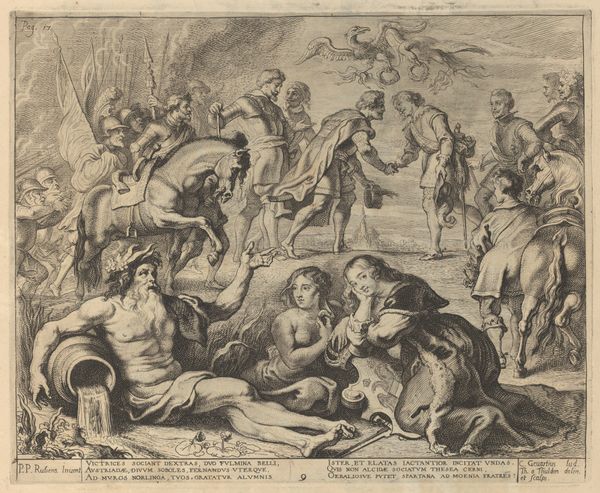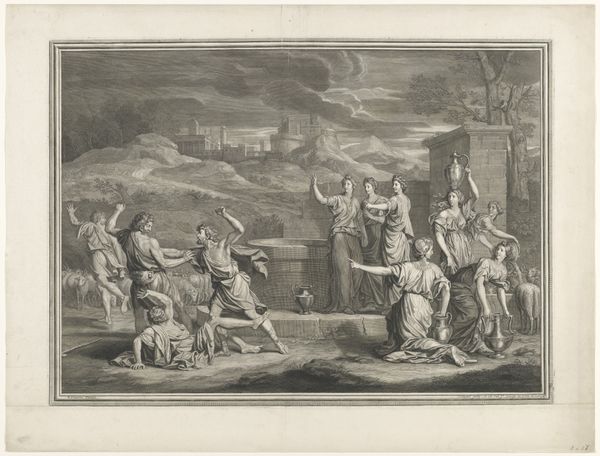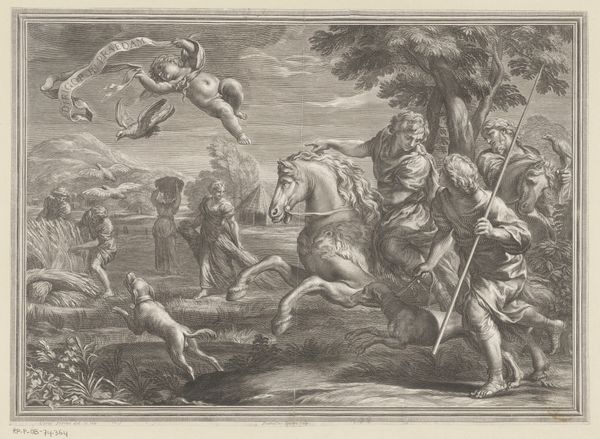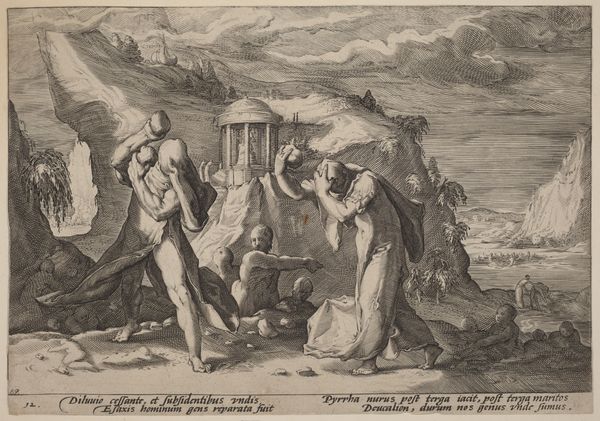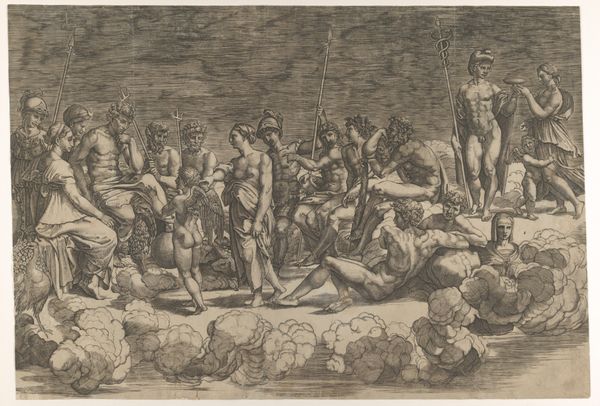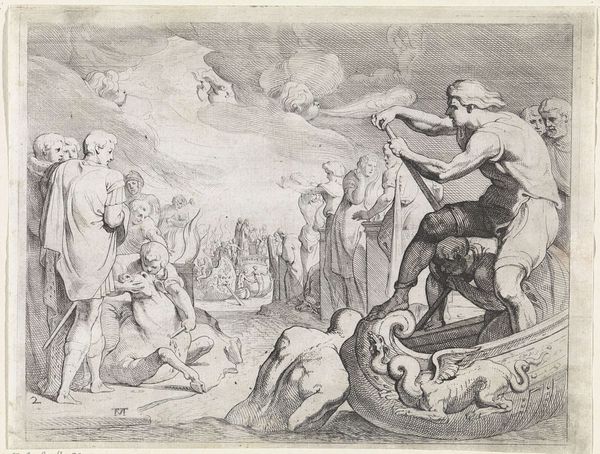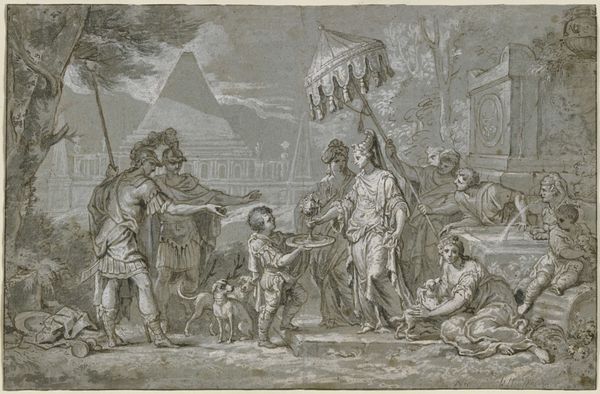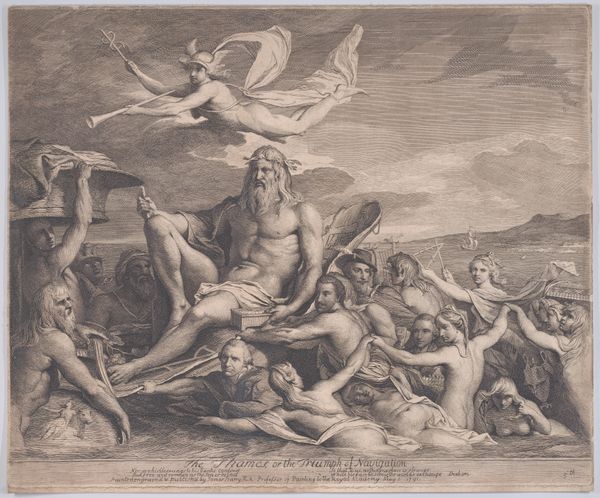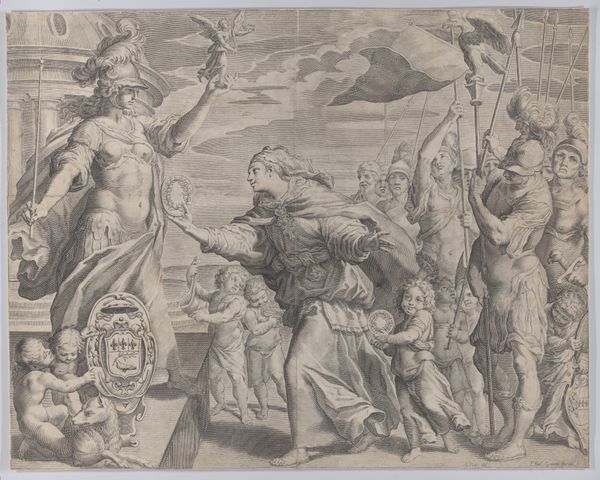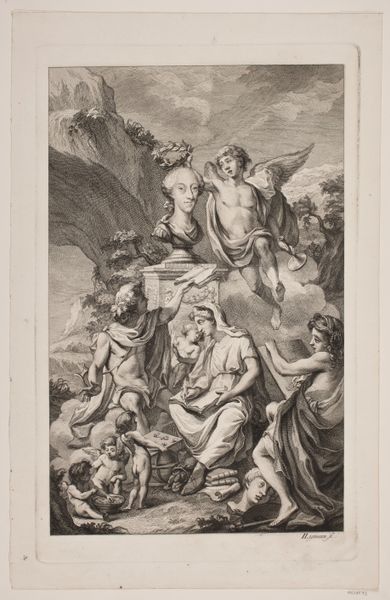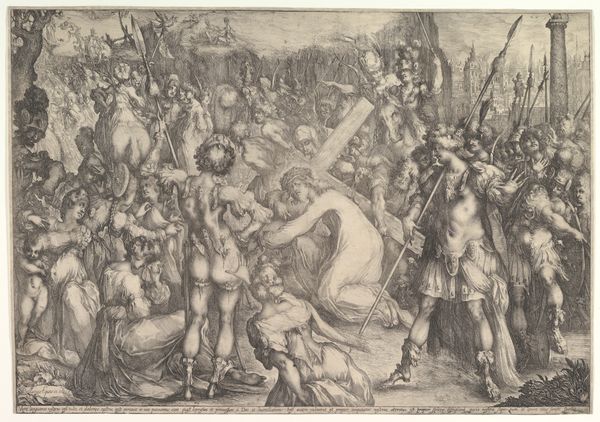
Orpheus Instructing a Savage People in Theology and the Arts of Social Life 1791 - 1792
0:00
0:00
drawing, print
#
drawing
#
neoclacissism
#
allegory
# print
#
classical-realism
#
figuration
#
history-painting
Dimensions: Plate: 16 5/16 × 19 13/16 in. (41.5 × 50.4 cm) Sheet: 16 5/8 × 19 15/16 in. (42.3 × 50.7 cm)
Copyright: Public Domain
Curator: This is "Orpheus Instructing a Savage People in Theology and the Arts of Social Life," created by James Barry between 1791 and 1792. Editor: My initial reaction is one of cool detachment, visually speaking. The stark contrasts and precise lines typical of neoclassicism don't exactly inspire immediate warmth. What grabs me most is the composition’s balanced, almost symmetrical structure. Curator: Absolutely. Barry’s work here, typical of history painting, can be understood within a wider political frame. Barry sought to critique contemporary society, specifically wealth disparity, advocating for enlightenment and progress. The narrative positions Orpheus as a civilizing force, leading the "savage people" towards societal advancement through the arts and reason, aligning neatly with the Enlightenment ideals. Editor: I can appreciate the thematic intent, but from a formal standpoint, the way the light falls feels… illustrative rather than evocative. See how it meticulously defines each figure? There’s almost a theatrical staging to the figures. Notice how he places Orpheus right in the very middle of the scene. Curator: True. We have to consider that the depiction of the “savage people,” might now read problematically through postcolonial lenses. Barry was perhaps reflecting and perpetuating the colonial attitude and its assumption of the ‘other’. Editor: I see your point. Although this interpretation seems possible, it may well depend on whether you interpret the characters from a mimetic or a diegetic point of view. But if we focus just on what Barry created, what does it mean to see these almost sculpted forms, rendered with a kind of cold perfection, receiving enlightenment? Is Barry contrasting passion with reason? Curator: I’d argue that's part of the intended dialectic. Barry is juxtaposing the perceived chaos of the "savage" state with the potential harmony of civilized society—a commentary, if perhaps heavy-handed. Editor: So, through dissecting line, form, and balance, alongside its social implications, the work encourages dialogue. I initially dismissed the coolness, but that emotional reserve feels deliberately constructed, provoking thought rather than pure aesthetic pleasure. Curator: Precisely. Barry’s piece remains a complex commentary. A reminder that artworks exist not in isolation but within complicated societal contexts, inviting discussion and scrutiny even centuries later.
Comments
No comments
Be the first to comment and join the conversation on the ultimate creative platform.
